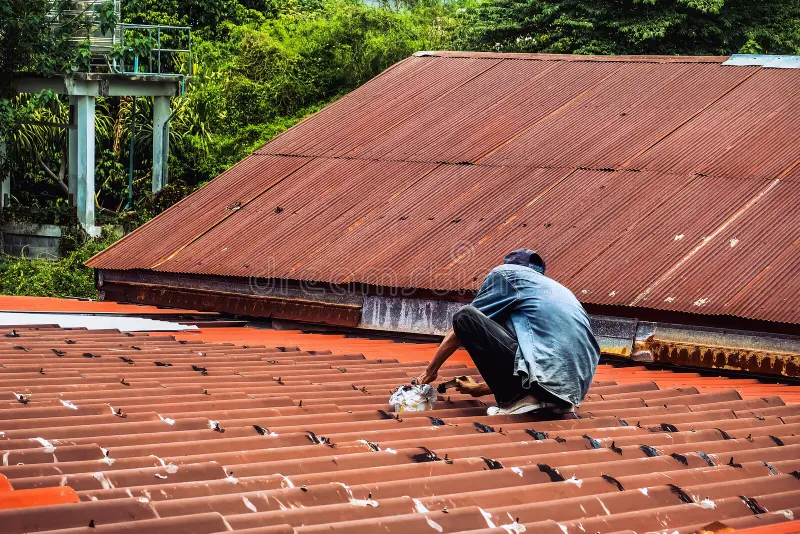
Roof waterproofing is one of the most vital steps in maintaining a secure and damage-free home or building. Whether you’re facing seasonal rains or unpredictable leaks, this solution helps shield your property for the long haul. If you’re searching for peace of mind, call us at (877) 519-8665 to speak with professionals who understand your roofing needs. Roof waterproofing not only preserves the life of your roof but also helps avoid future repair costs. It adds value and strength to your property, no matter its age or location.
Why Waterproofing is Essential for Every Roof
Every roof flat or sloped, residential or commercial is exposed to environmental elements that can cause long term damage. Rainwater, snow, and humidity gradually penetrate weak points, especially in older roofs or those without proper sealing. That’s where roof waterproofing plays a crucial role. It creates a durable barrier that prevents moisture infiltration, wood rot, and mold growth.
As time progresses, untreated roofs become vulnerable. This leads to costly repairs, premature roof replacements, and even interior damage. Fortunately, preventive measures such as waterproof coatings and membranes provide strong defense against water ingress. These treatments are suitable for all roofing types, making them a universally beneficial solution.
Benefits That Go Beyond Leak Prevention
One of the most compelling reasons homeowners and business owners choose roof waterproofing is its long-term return on investment. It significantly extends your roof’s lifespan, which saves you thousands in future repairs or replacements. Beyond that, a waterproofed roof enhances energy efficiency by maintaining insulation and reducing heating and cooling costs.
When water seeps into insulation layers, your HVAC system must work harder to maintain indoor temperatures. By stopping moisture at the source, waterproofing keeps your structure energy-smart and eco-friendly. This is particularly useful in areas prone to storms or excessive rainfall.
Common Waterproofing Methods and Materials
There are several reliable techniques available for roof waterproofing. Liquid-applied membranes are one of the most common and cost-effective options. These are spread over the roof surface and form a seamless, flexible coating once dried. They adapt well to irregular surfaces and small cracks.
Other methods include bituminous membranes, thermoplastic coatings, and EPDM rubber sheets. Each method serves different structural needs depending on the roof type and condition. Professional roofing contractors can assess your situation and suggest the most durable, weather-resistant solution that ensures longevity.
When to Consider Waterproofing Services
Timing is crucial. If you’re noticing signs like water stains, interior leaks, or damp patches on ceilings and walls, your roof may already be compromised. It’s important to act before the damage worsens. Even if you don’t see visible symptoms, aging roofs over 10 years old should be evaluated for roof waterproofing.
Additionally, during roof installations or major renovations, waterproofing should be included as a standard step. Prevention is always more affordable than repair. Give us a call at (877) 519-8665 to schedule a free consultation and inspection today.
Professional vs DIY: Making the Right Choice
Although some products allow for DIY application, most effective roof waterproofing methods require professional-grade materials and installation. Roofing experts are trained to detect vulnerabilities and apply waterproofing systems that meet building codes and warranties.
Inaccurate DIY methods may lead to partial protection or even worsen water intrusion. Moreover, licensed contractors often offer guarantees on workmanship and materials. Hiring a professional ensures peace of mind and long term protection for your home or business.
Ideal Roofing Types for Waterproofing
Waterproofing is especially beneficial for flat roofs, which naturally retain more water than sloped designs. However, pitched and metal roofs also benefit from added sealing, particularly around joints, chimneys, and skylights. In commercial applications, roof waterproofing helps protect sensitive equipment and workspaces from moisture-related issues.
For homes in flood-prone or humid areas, waterproofing also adds an extra layer of security. By integrating modern sealing materials and techniques, homeowners can avoid frequent maintenance while enjoying lasting results.
Cost Factors and Long Term Value
Many property owners are concerned about the cost of waterproofing, but it’s surprisingly affordable compared to roof replacement or extensive water damage repairs. The price varies based on roof size, material, and condition, but the protection it offers pays off quickly.
By reducing future repair bills and improving your building’s energy performance, roof waterproofing practically pays for itself over time. Plus, the added layer can even enhance the curb appeal and resale value of your property.
Conclusion
Roof waterproofing is more than just an upgrade; it’s a necessity for long-term structural health and indoor comfort. Whether you’re a homeowner or business operator, taking action now can prevent thousands in future costs and extend your roof’s useful life. Our experts are ready to assist you with premium waterproofing solutions tailored to your property. For top-tier service, call (877) 519-8665 we’re here to protect what matters most.
Frequently Asked Questions
How long does roof waterproofing last?
Depending on the materials used, roof waterproofing can last between 10 to 20 years with proper maintenance.
Can I waterproof my roof during the rainy season?
It’s best to be waterproof during dry weather for proper curing, though professionals can work around light rain with special products.
Does waterproofing work on older roofs?
Yes, older roofs can benefit from waterproofing, though some repairs may be required before application.
Is roof waterproofing environmentally friendly?
Yes, many modern waterproofing materials are low-VOC and contribute to better energy efficiency, reducing your carbon footprint.